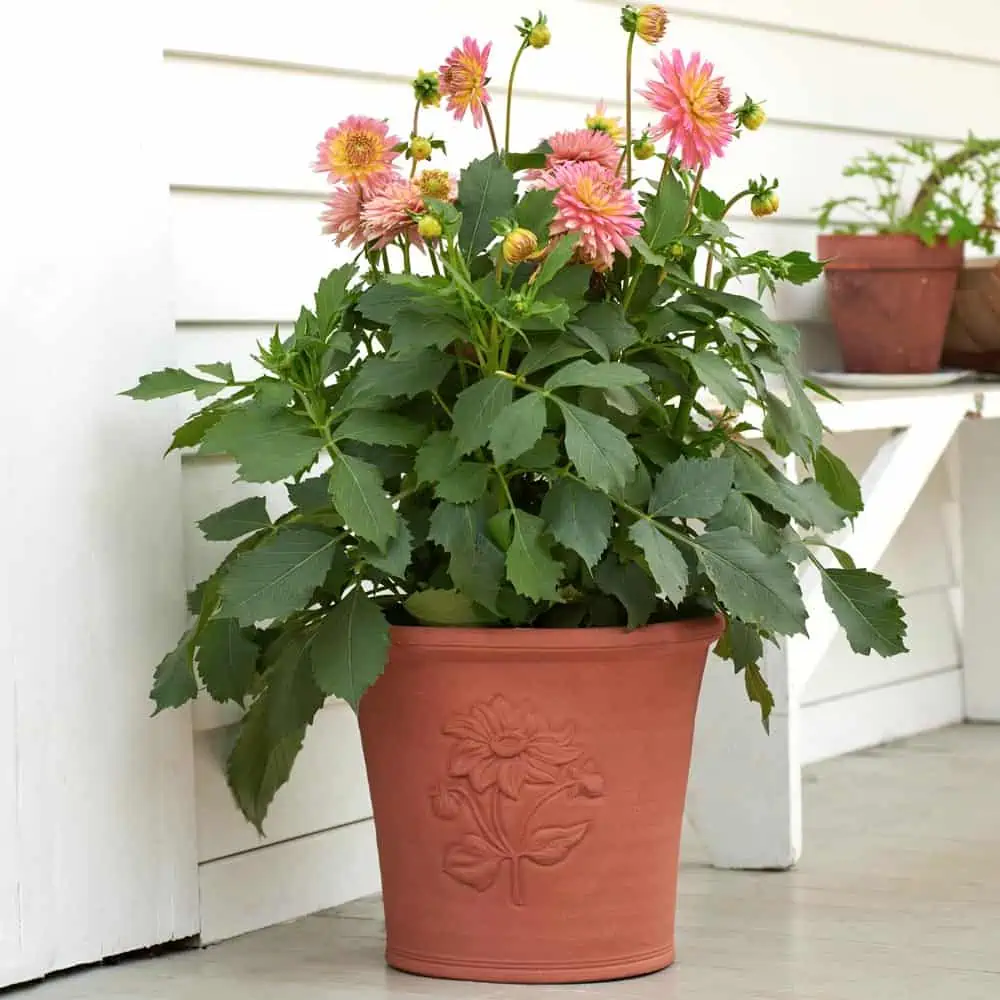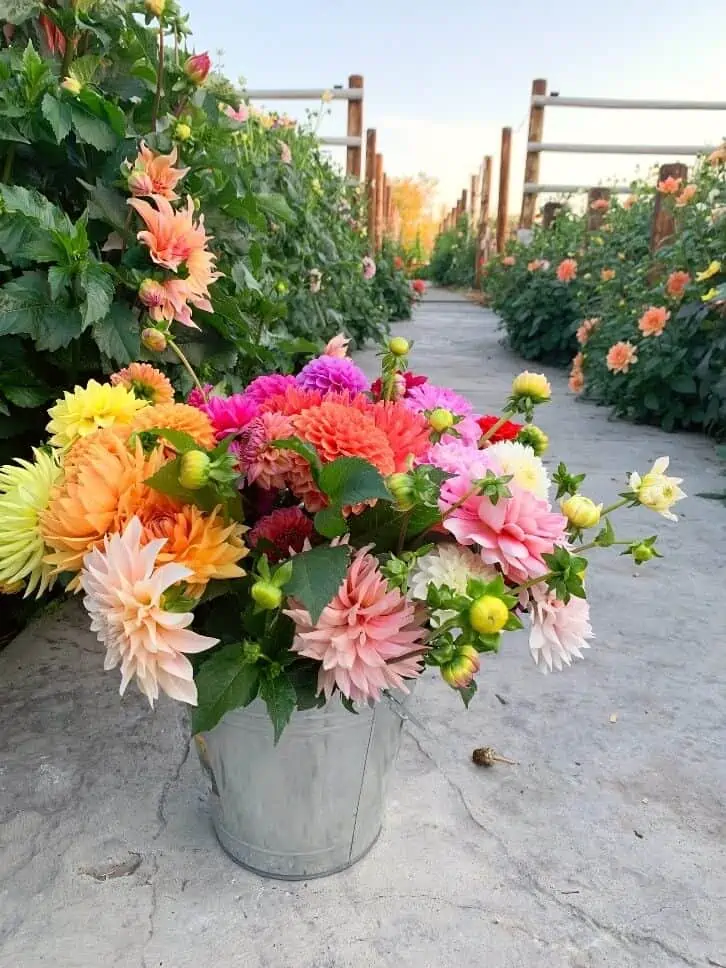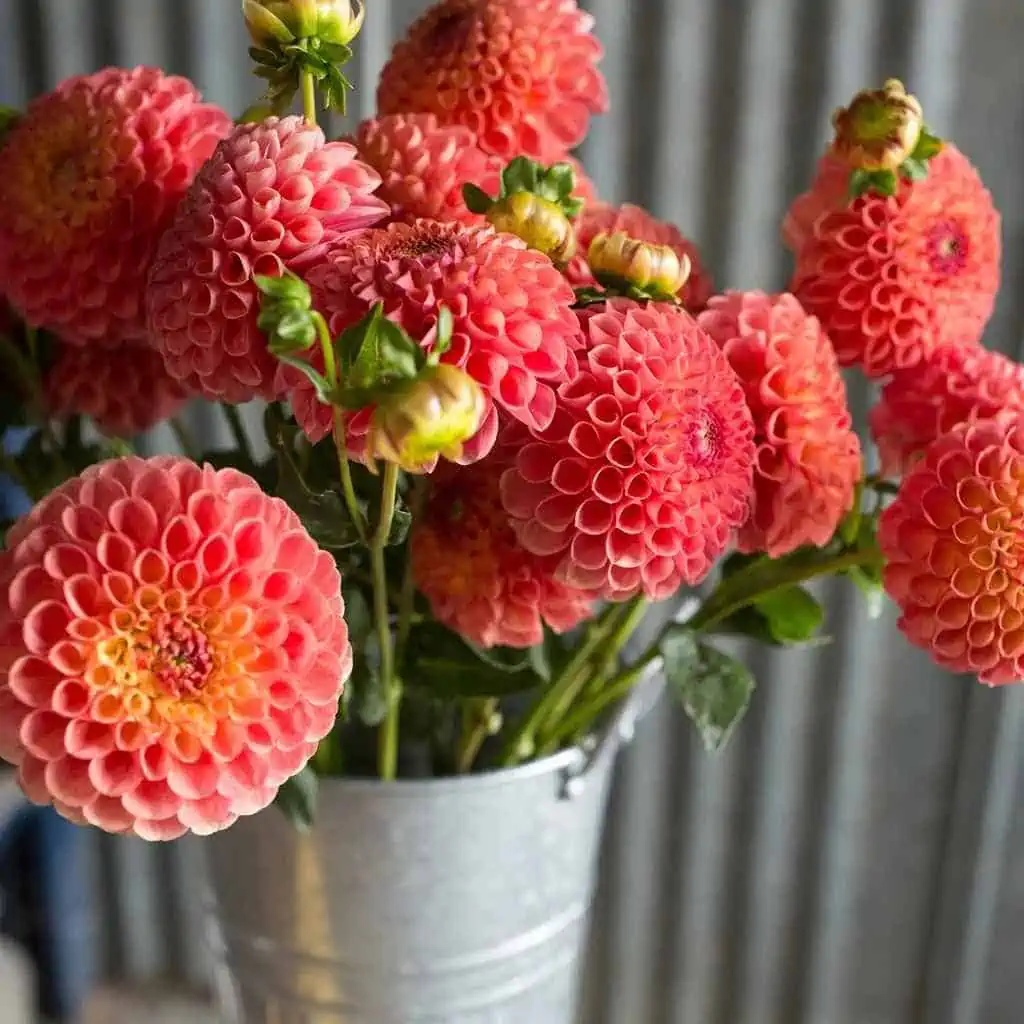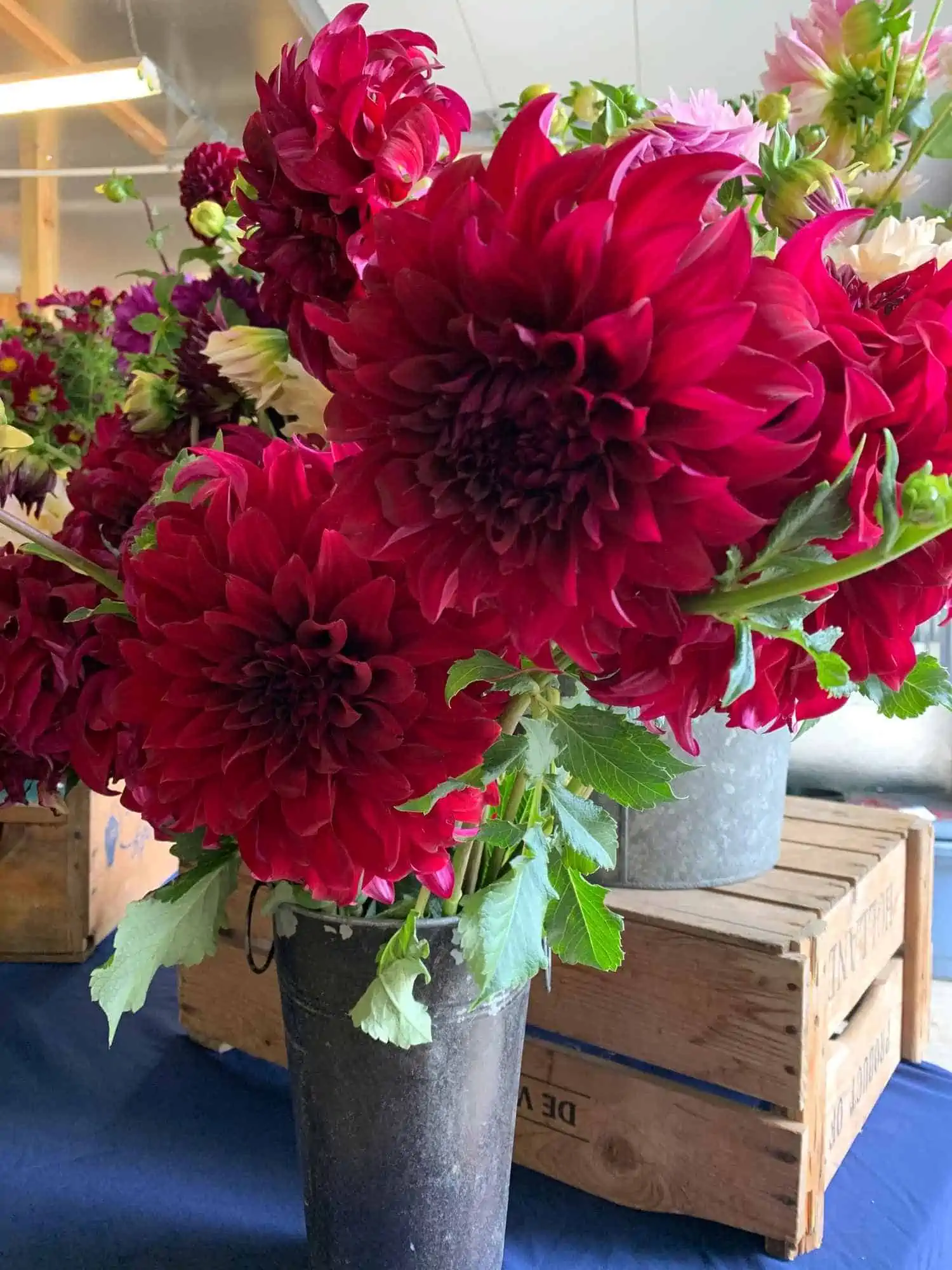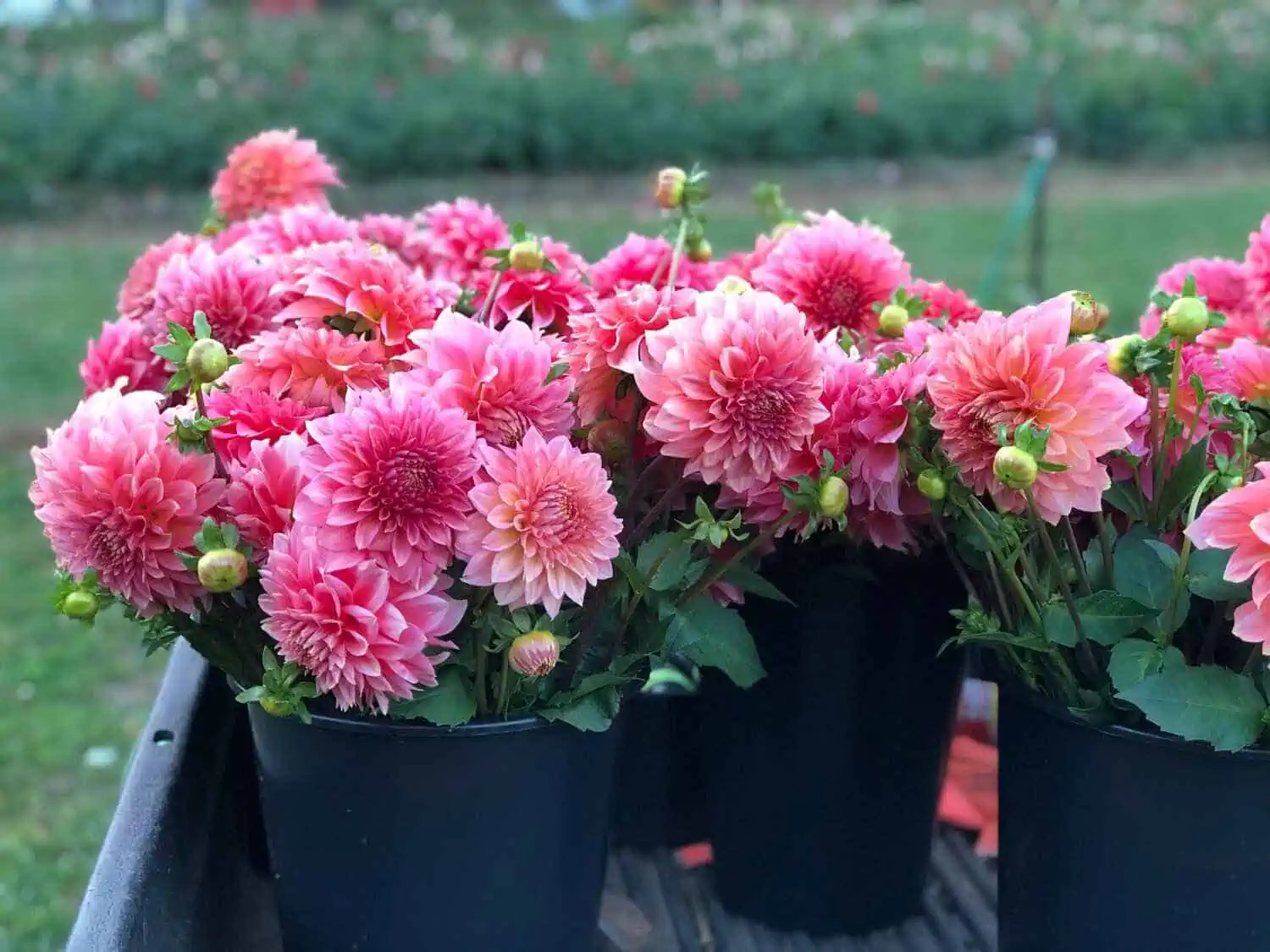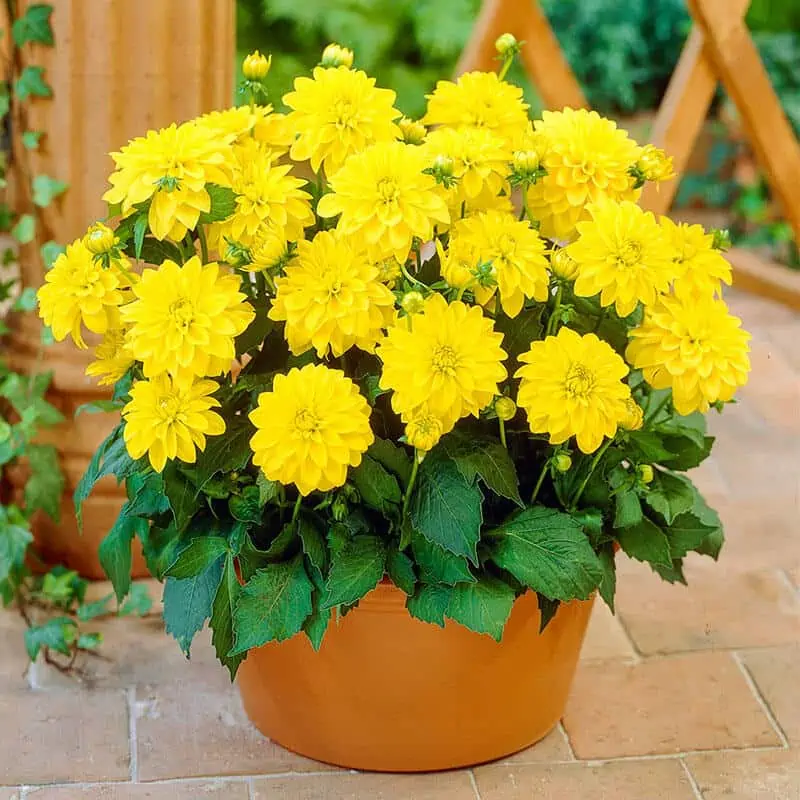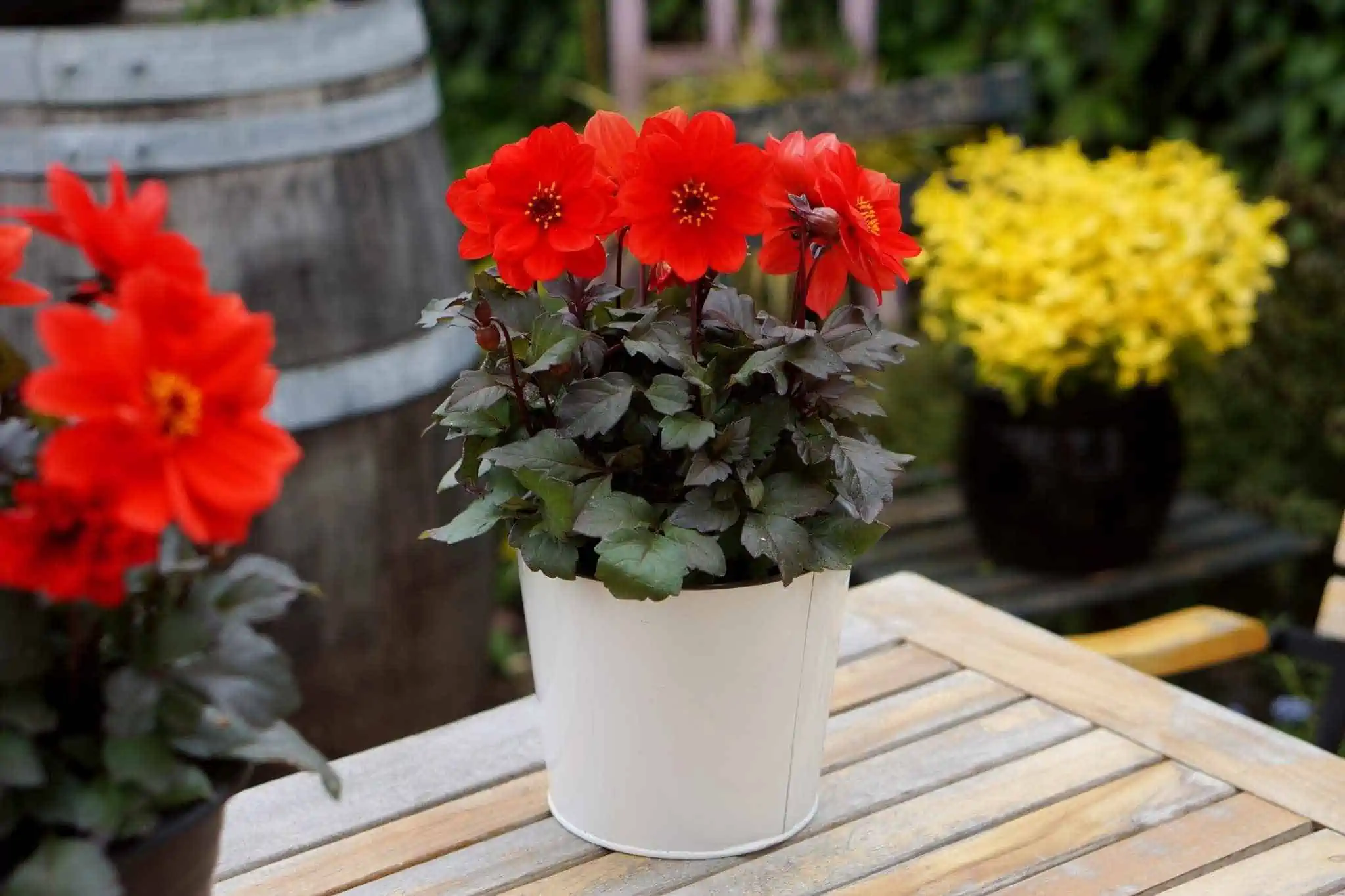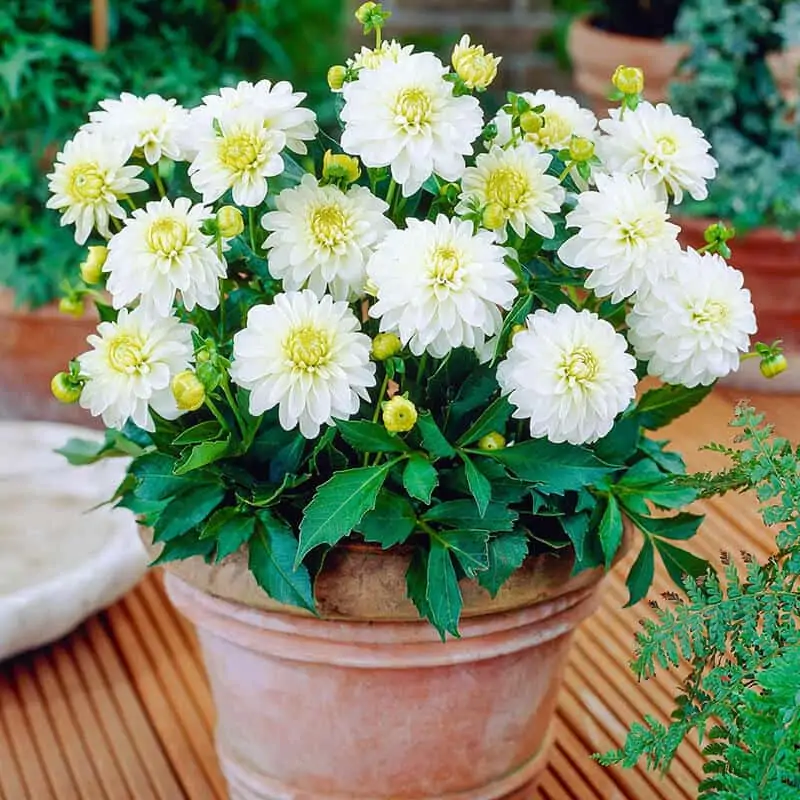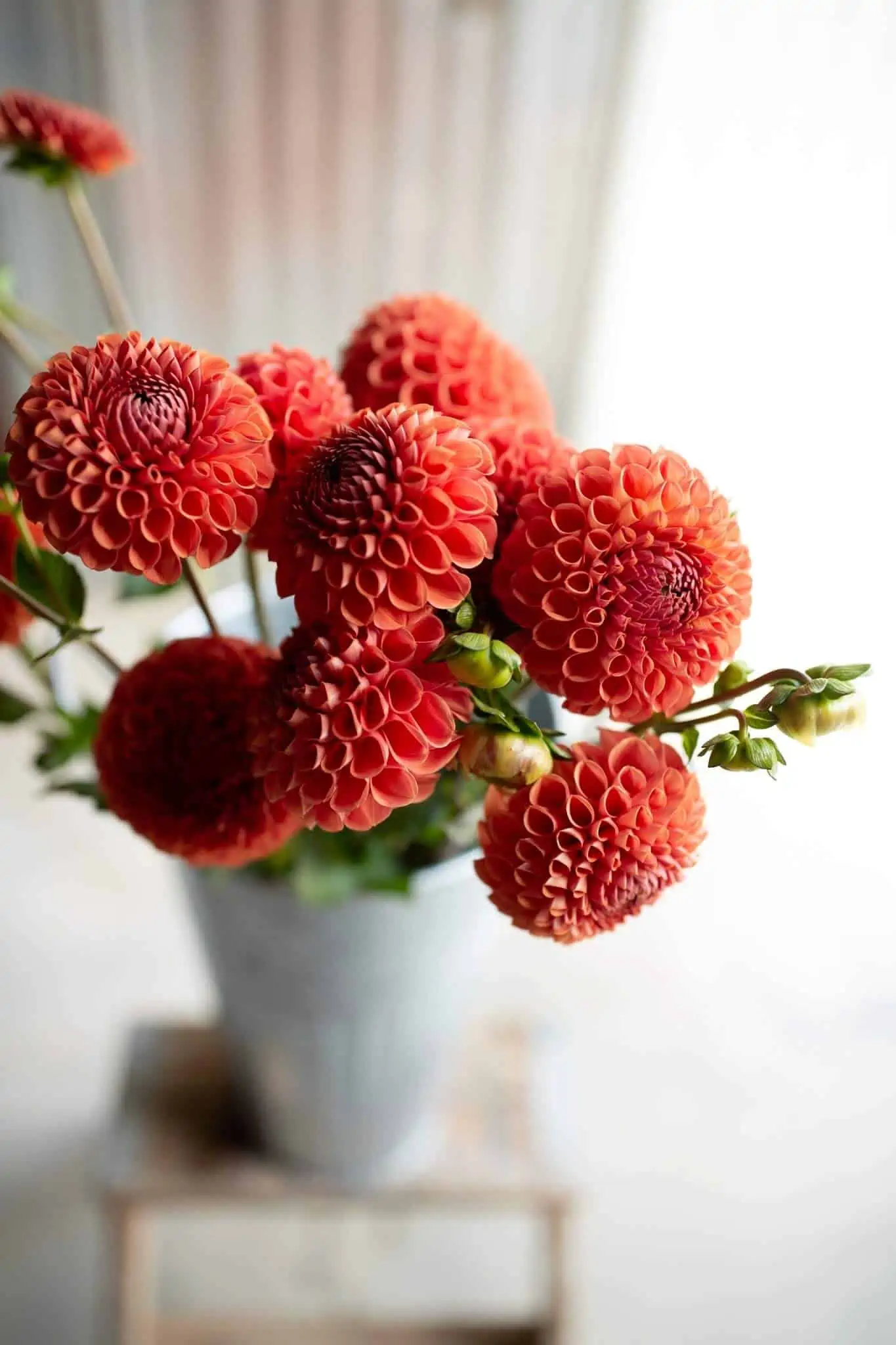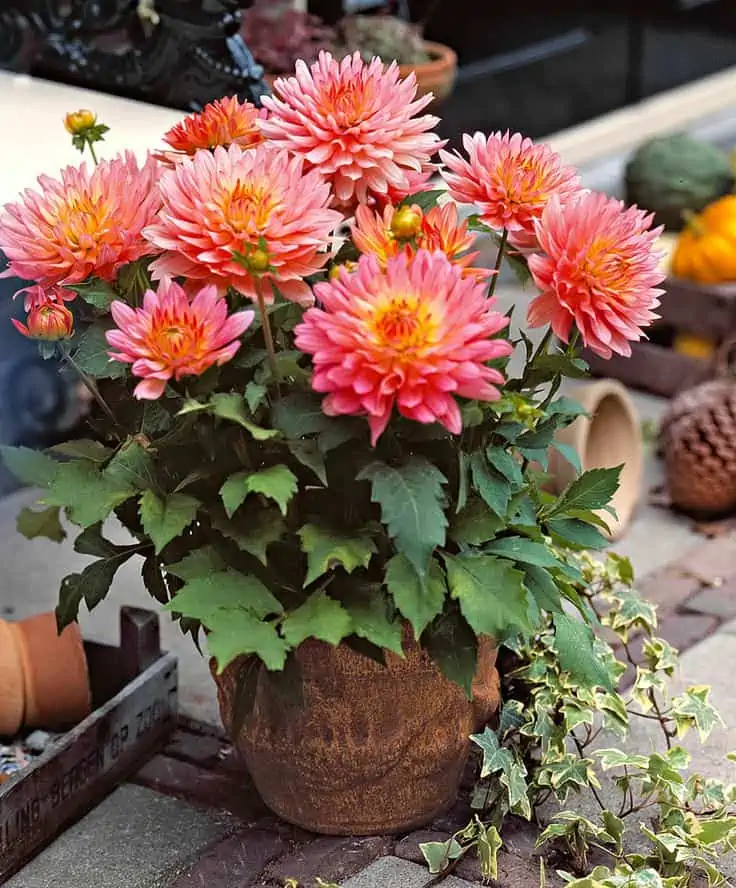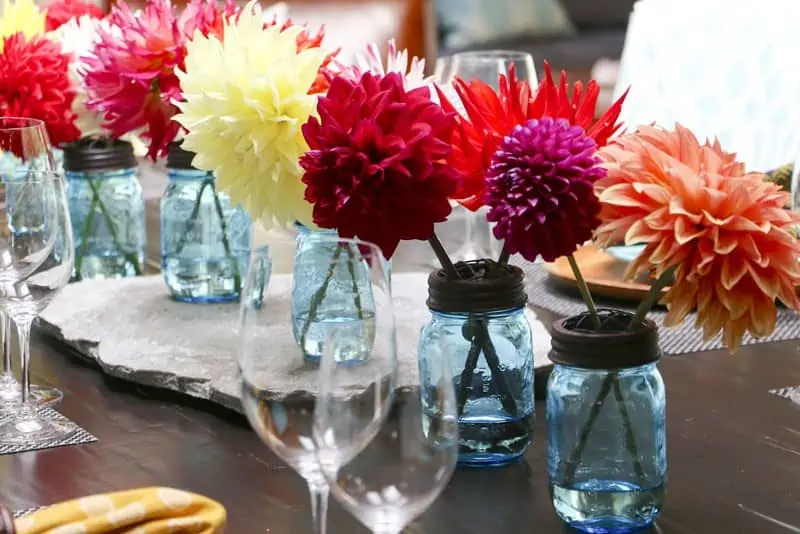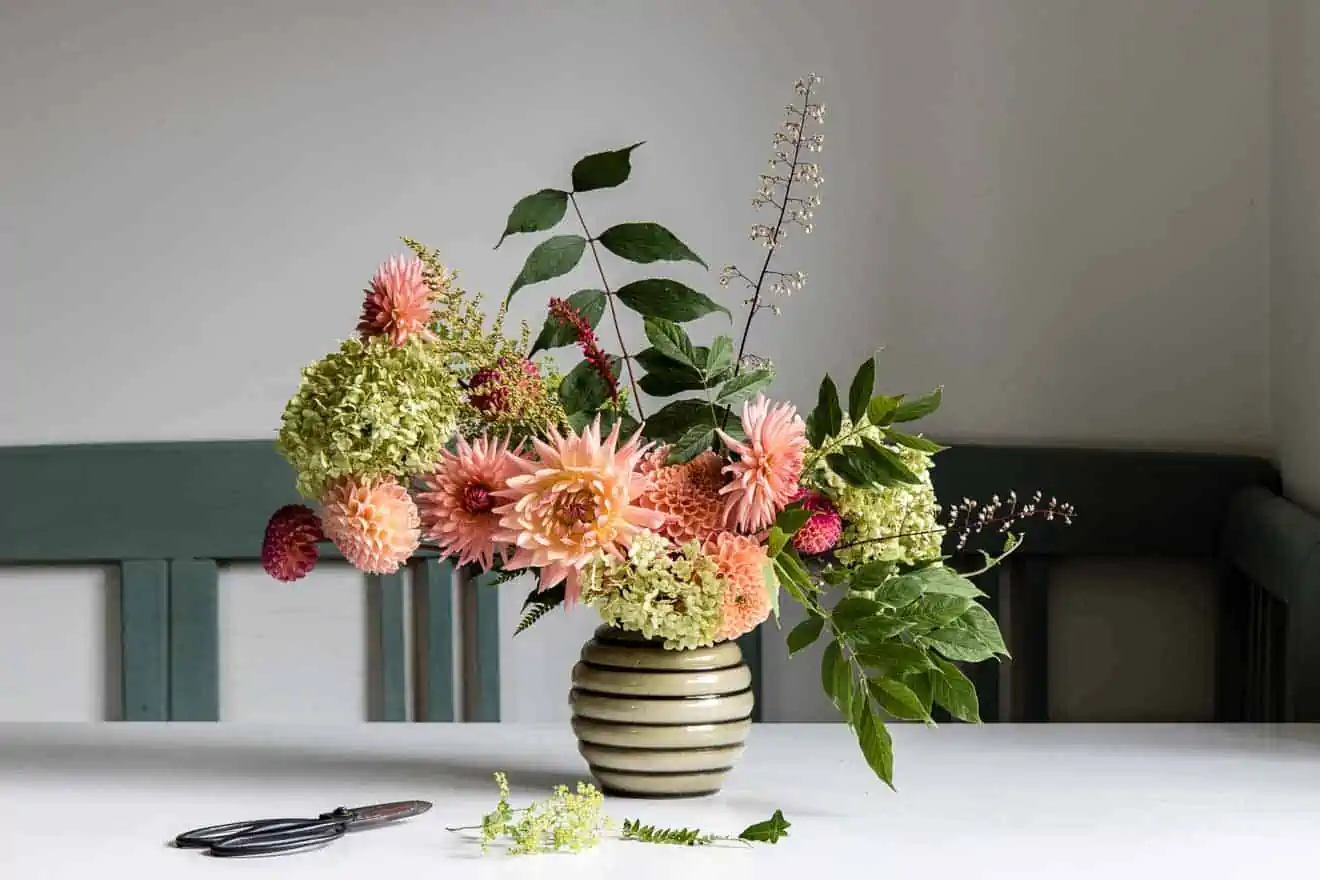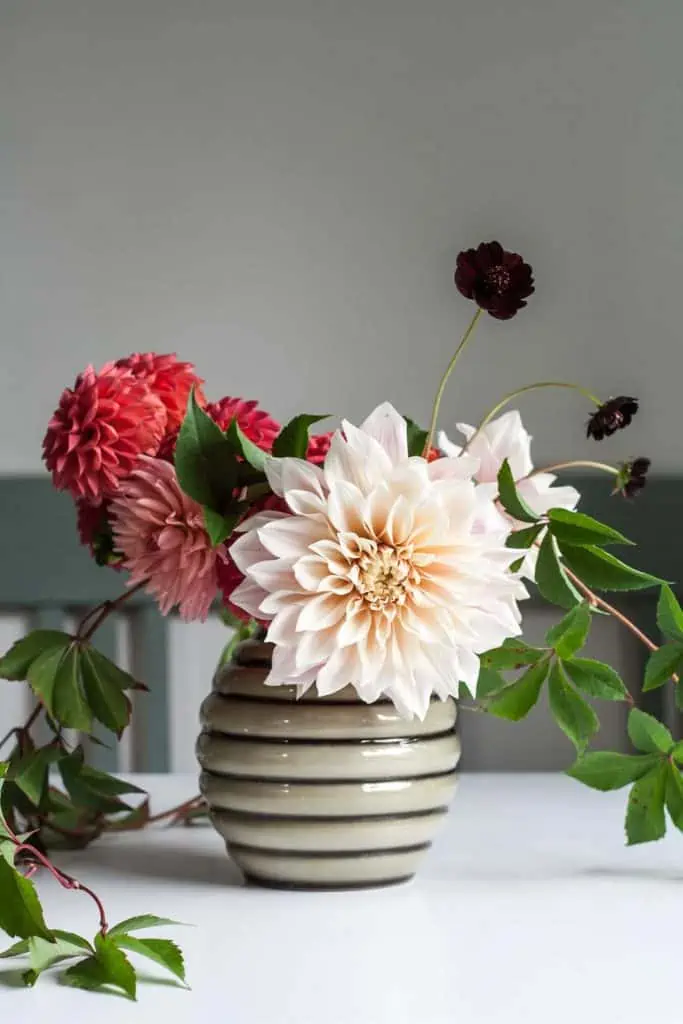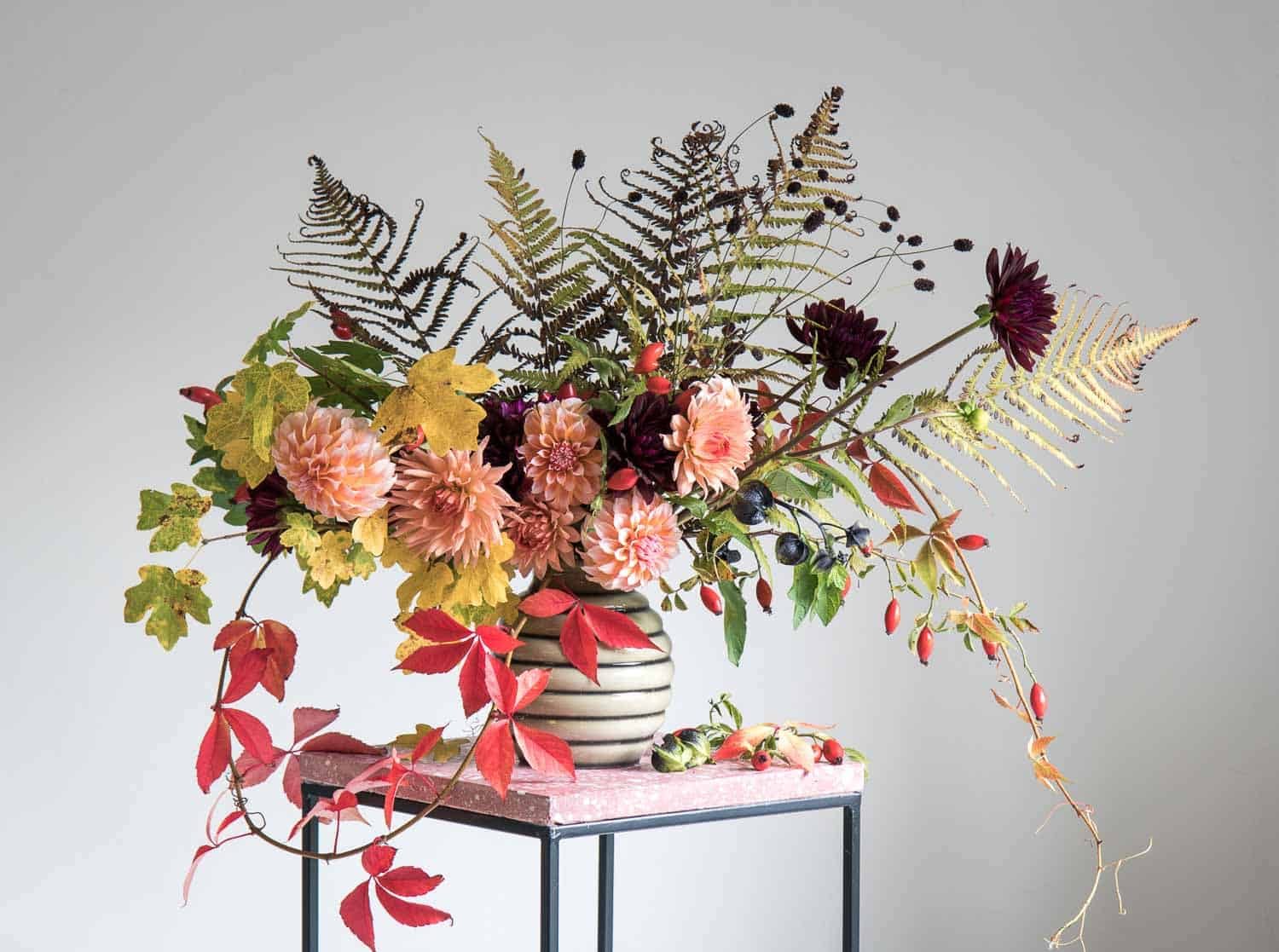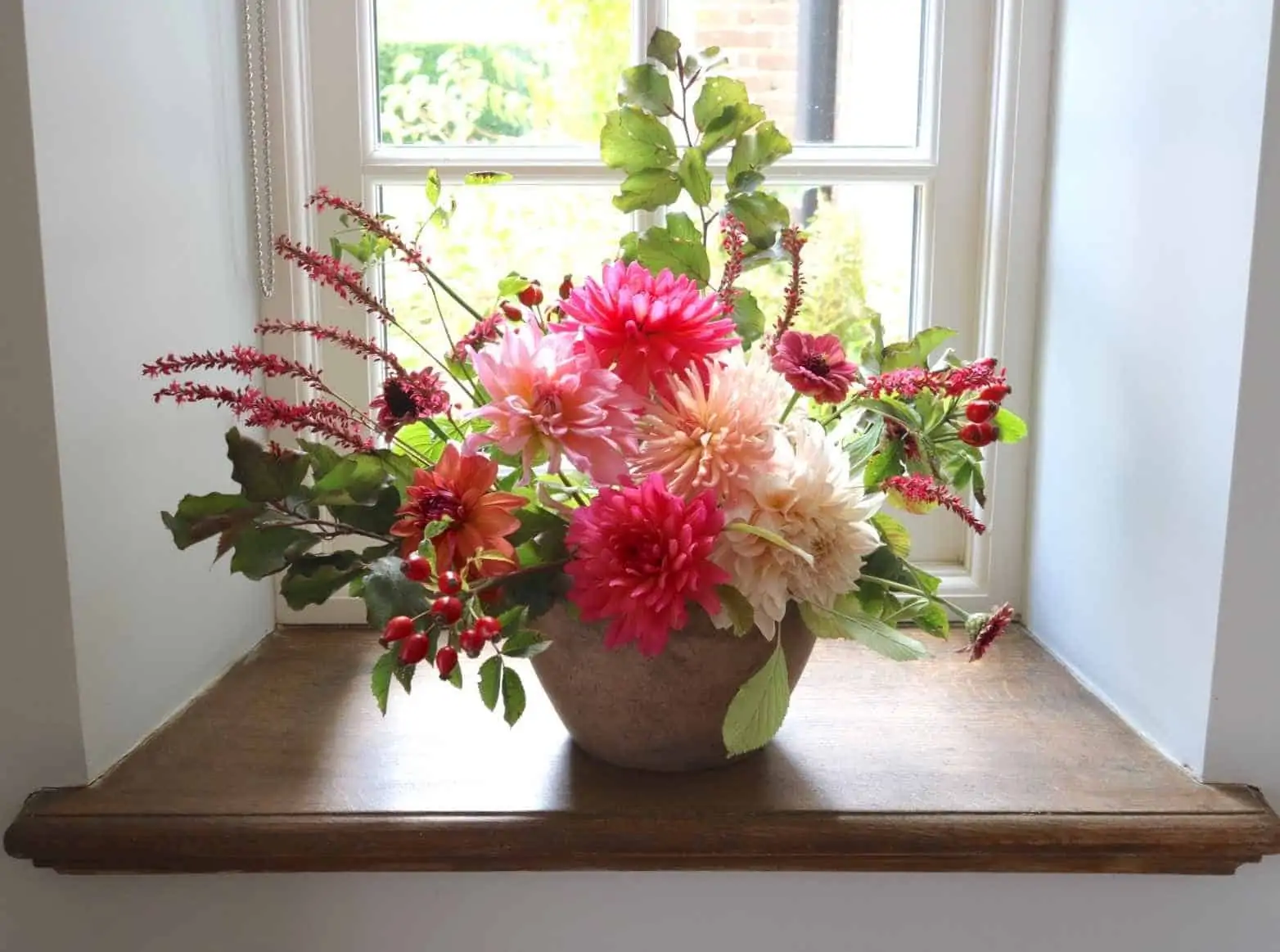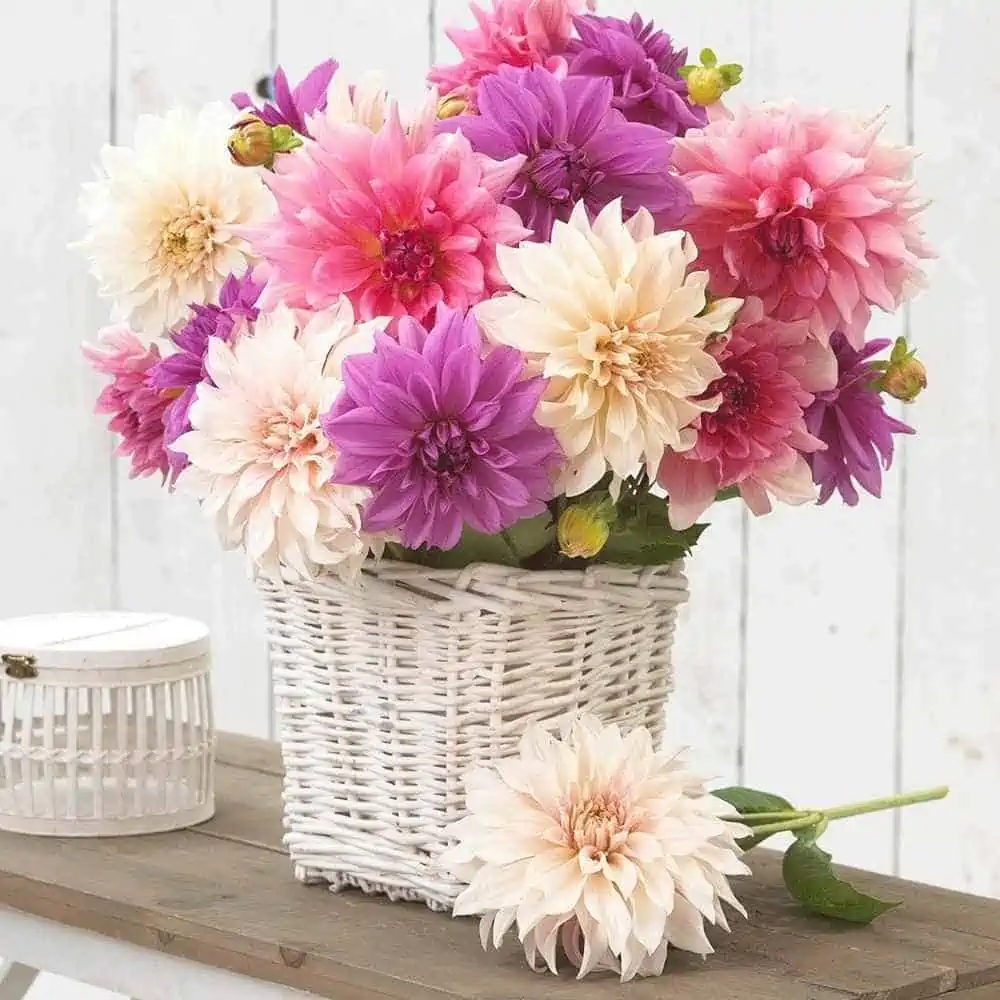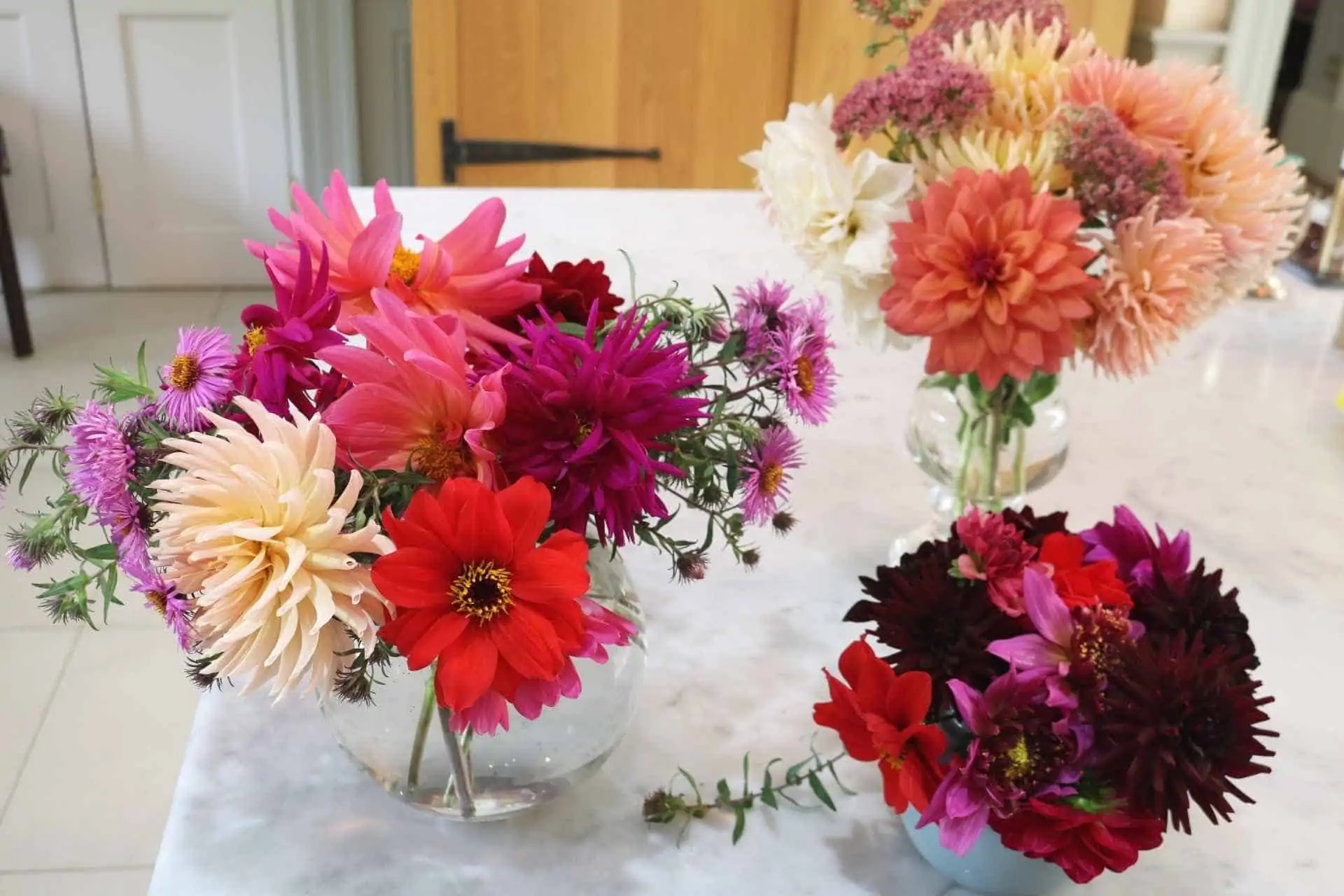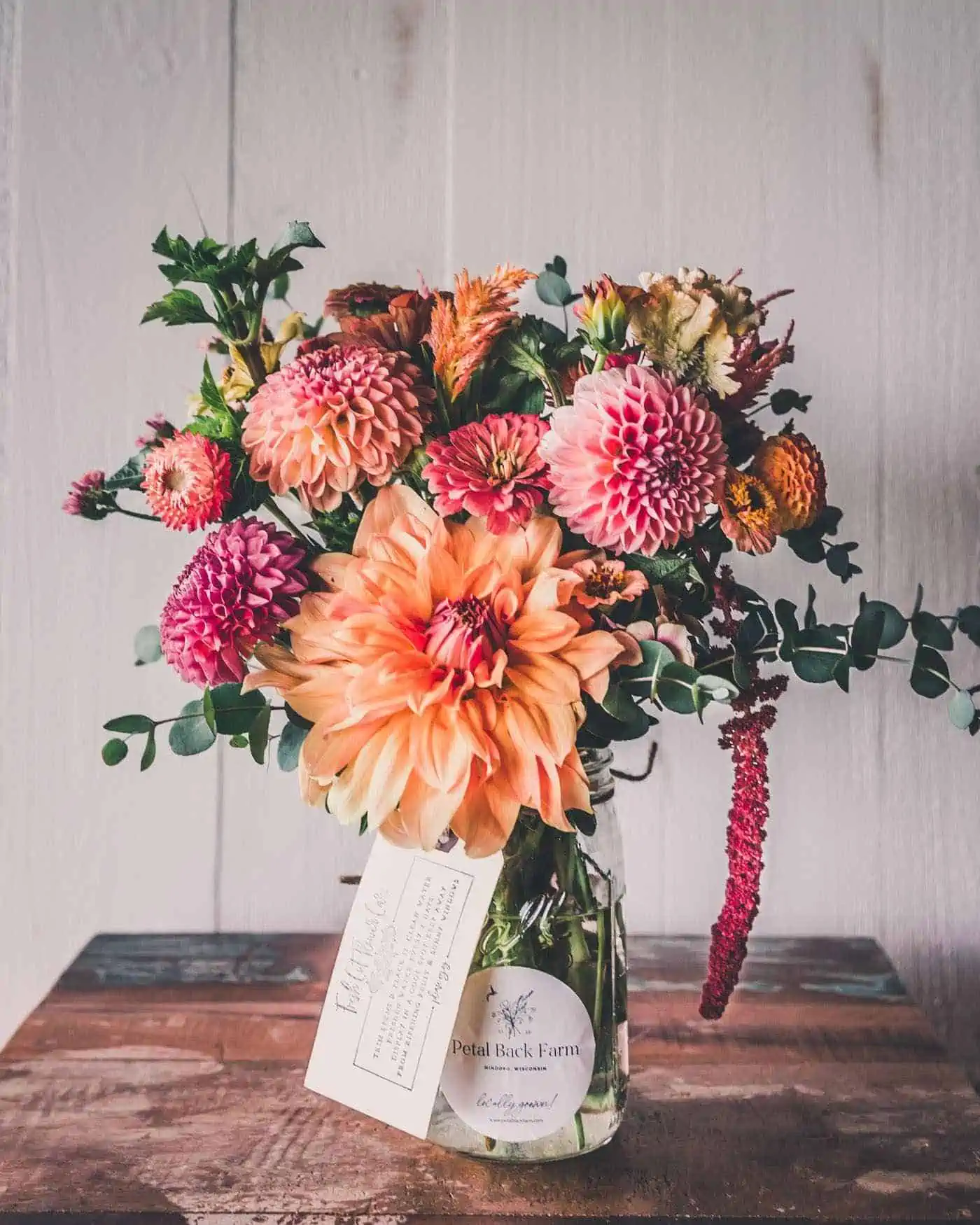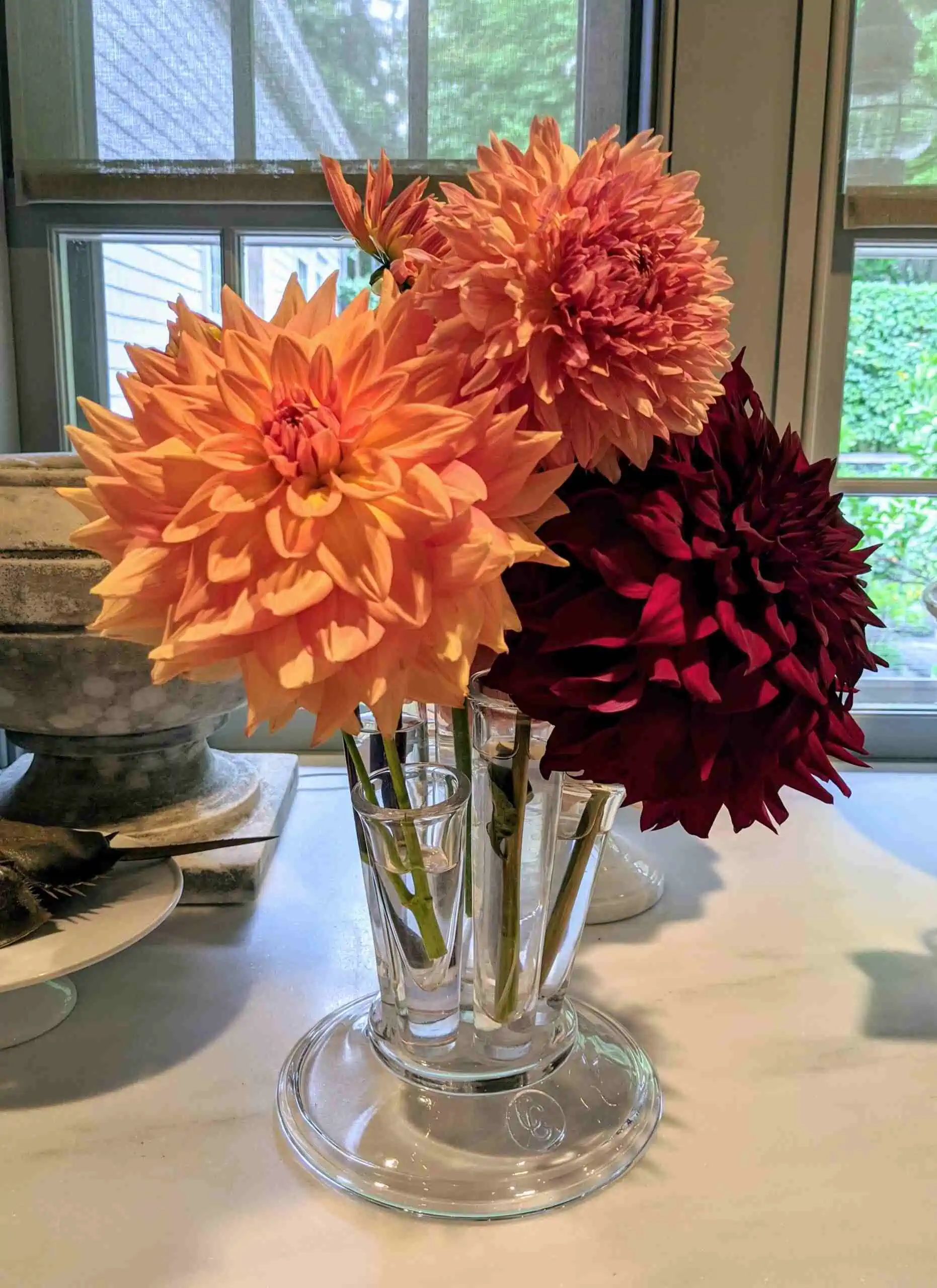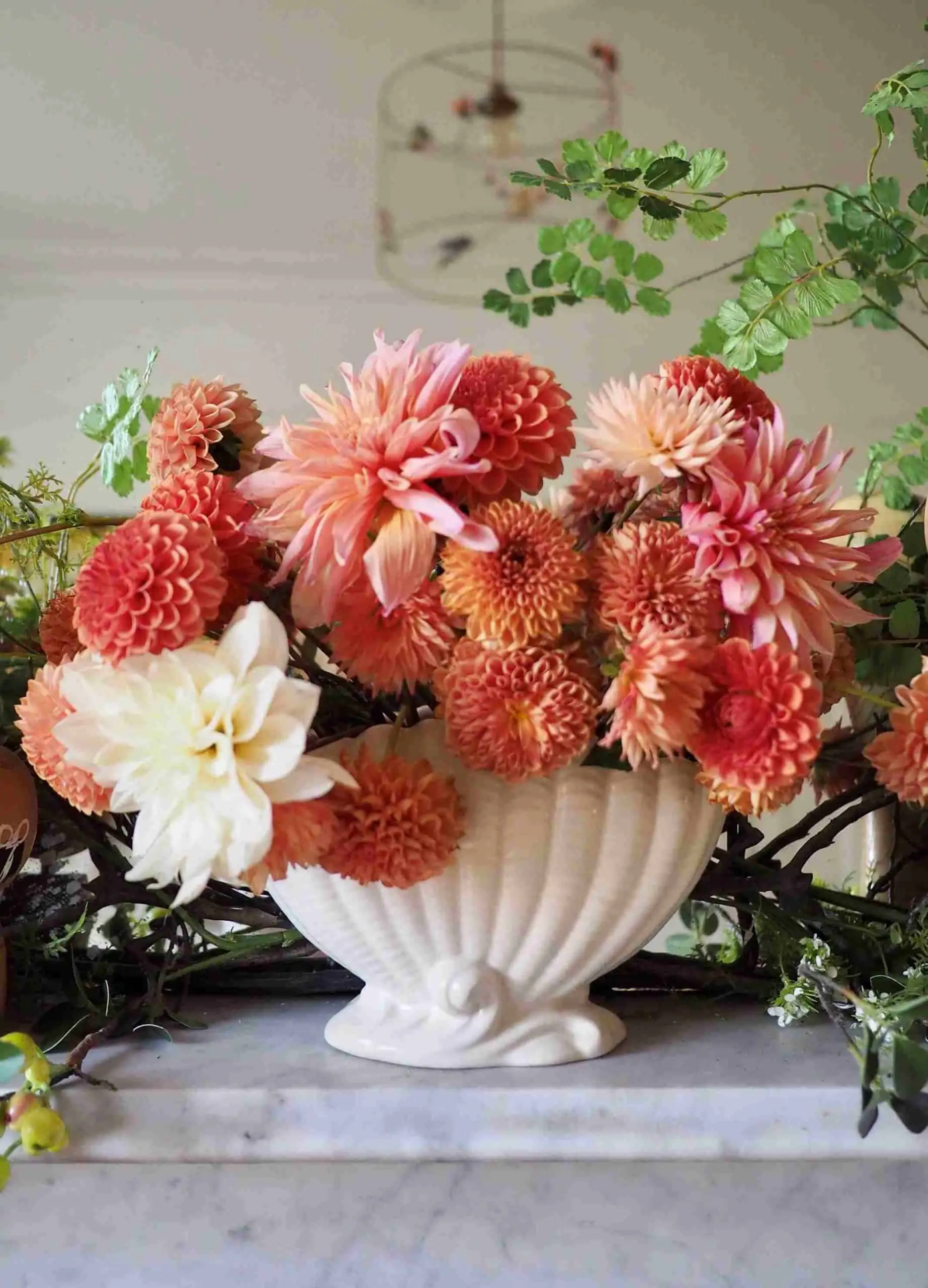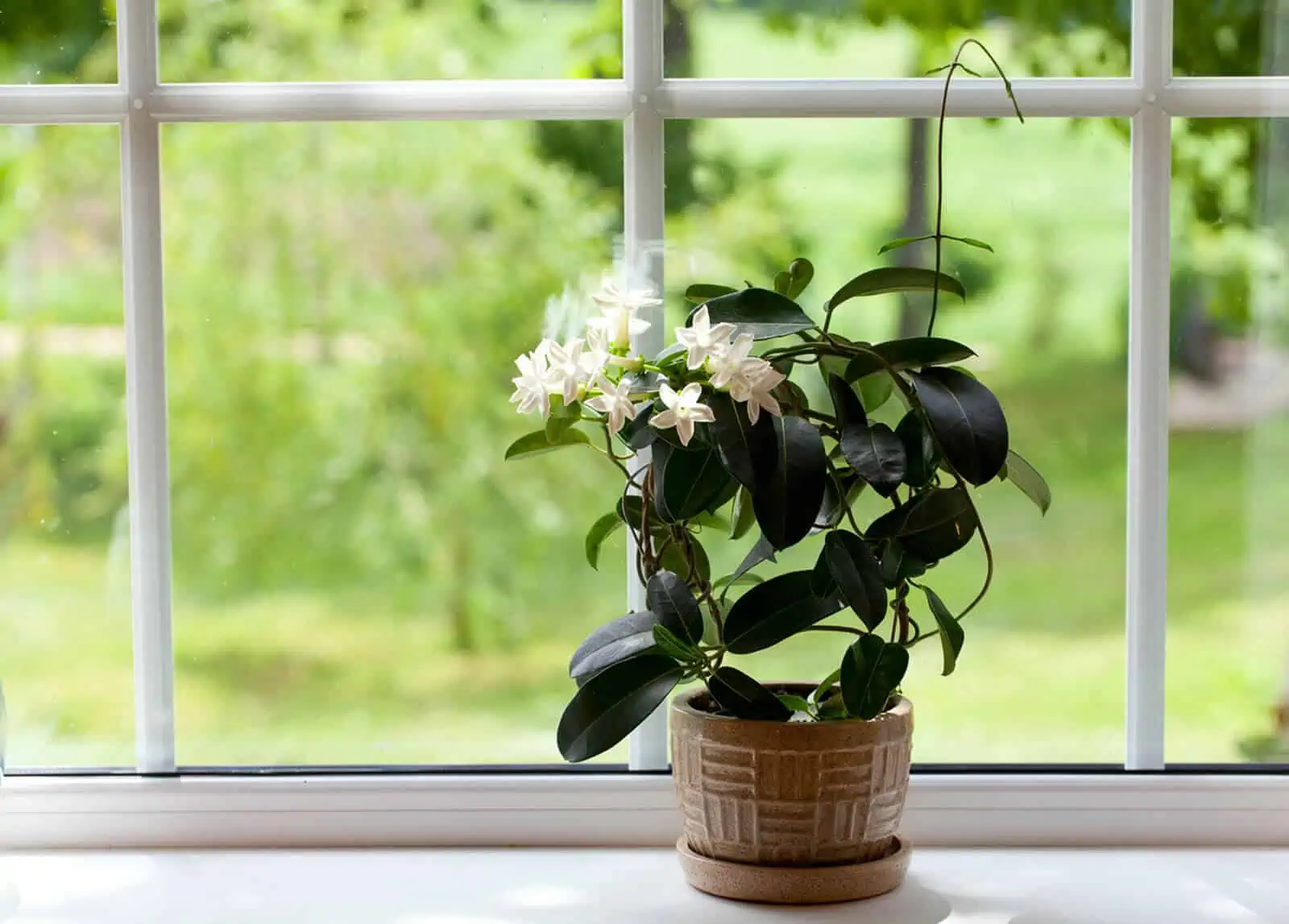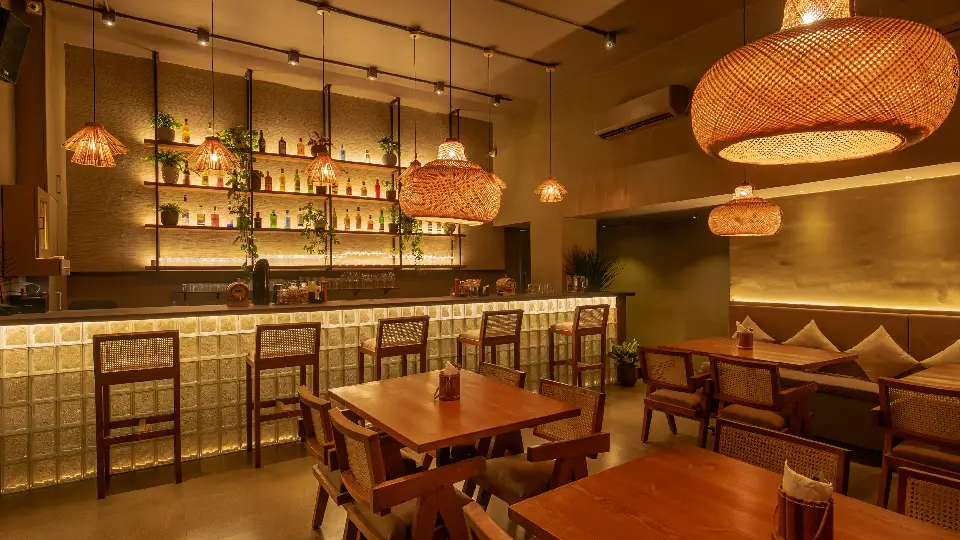An at-home plant display or a cute and cosy balcony garden can be just the thing you need to elevate your home decor. Keeping plants at home is ideal for nature lovers who wish to embellish their homes along with reaping the health benefits that plants have to offer. Creating a stunning plant display or balcony garden can be a challenging task. One of the biggest challenges is finding the right plant to adorn your home. So, today, we will dive deep into a potential indoor plant, Dahlia. You can plant Dahlias from seeds, roots or cuttings. Furthermore, Dahlias can be used to manifest the perfect summer image into reality. It comes in all shapes, sizes and colours and therefore, it is a versatile plant that can match anyone’s style.
You can use this stunning flower to brighten your home with its vibrant colour. Also, you can use its soft, delicate varieties to make a stunning floral arrangement. Regardless of your need, you can plant a dahlia indoors as well as outdoors. So, in this article, we have laid out all the different types of Dahlias for your information. Furthermore, we discuss how to plant, care for, and propagate them. Finally, we have included buying links and styling inspiration images to ensure that you incorporate Dahlias into your decor today!
Contents
- 1 Types of Dahlias
- 2 Collarette
- 3 How to grow Dahlias indoors?
- 4 How to care for and propagate Dahlias?
- 5 Get exquisite Dahlias here!
- 5.1 Nation Bloom Big Dahlia Pink Plant
- 5.2 DHgate Multi-Colour Dahlia Seeds
- 5.3 Ubuy Dahlia New Baby (Tubers) Orange
- 5.4 Plantslive Dahlias (Rani) – Plant
- 5.5 Ugaao Dahlias Seeds
- 5.6 Nurserylive Dahlias (Any Colour) – Plant
- 5.7 Holland Bulb Farms Pulp Fiction Dahlias
- 5.8 Plantslive Dahlias Plant
- 5.9 Root Bridges Dahlias Mix Seeds
- 5.10 Lawness Belle Of Barmera Dahlias 60 Seeds
- 6 Ultimate inspiration to enliven your home with Dahlias
- 7 Conclusion
- 8 How to plant, grow & decorate using Jasmine flowers (Shop here!)
Types of Dahlias
Pompon
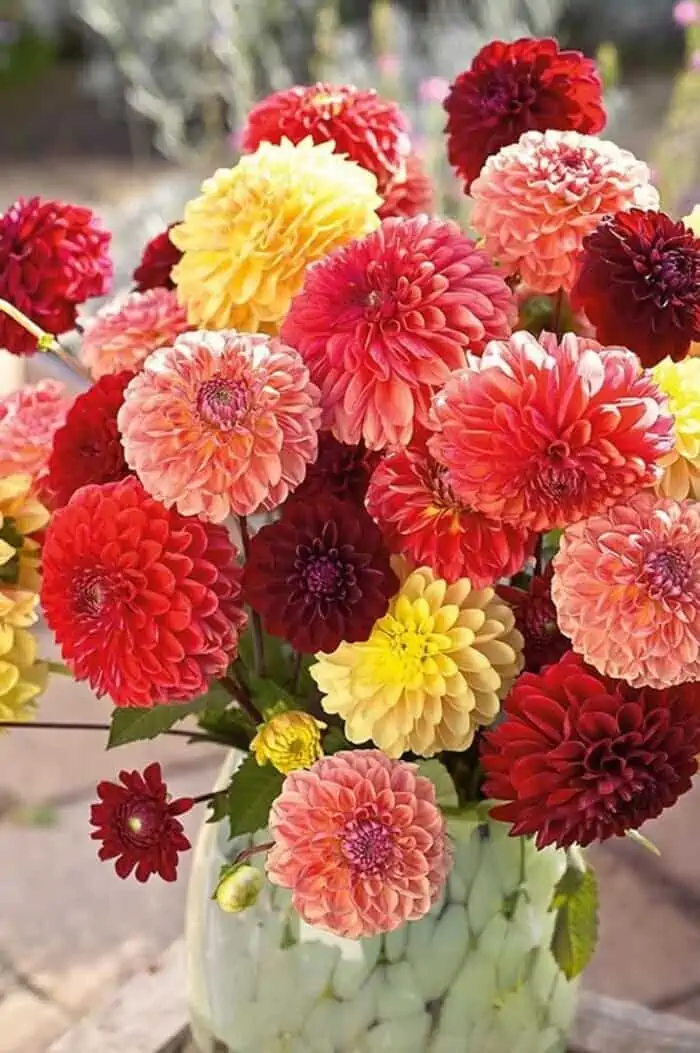
Image Source: Lowes.com
This is a small variety of Dahlias with an identifiable pompon shape as can be seen from the image above. The flowers have a globe shape and the petals are either blunt or somewhat rounded at the tips. Furthermore, the flower petals are tightly woven together to give the appearance of a pompon.
| Also see: Hibiscus: Guide to growing, caring & decorating (32+designs) |
Cactus
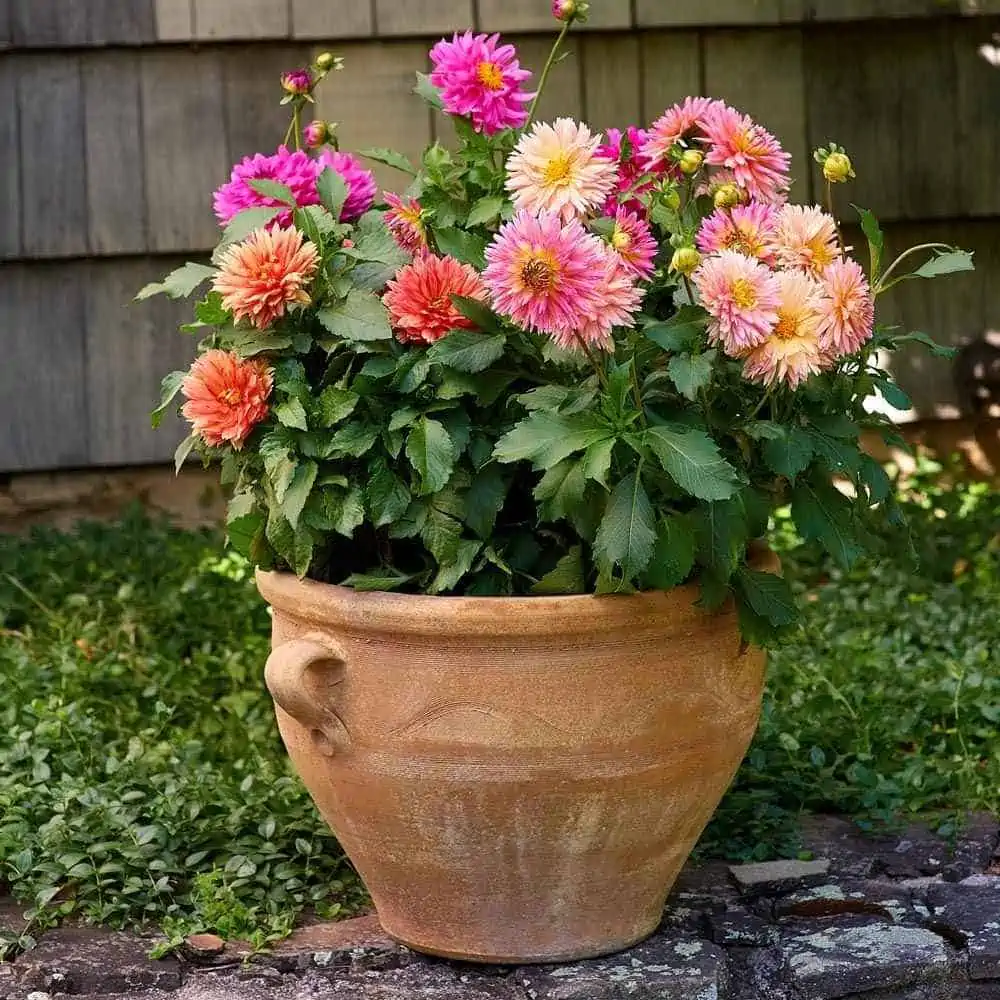
Image Source: Whiteflowerfarm.com
Cactus Dahlias have the most distinct flower shape as shown by the image displayed above. Their petals are spiny, forming a star-like shape that is sometimes curved inward or outward. These flowers can range from tiny to giant. Also, this variety needs comparatively less staking than others. Cactus Dahlias are the perfect summer flowers and they bloom till autumn.
| Also see: Lily flowers: Ultimate guide to grow & style various types (Buy now!) |
Waterlily
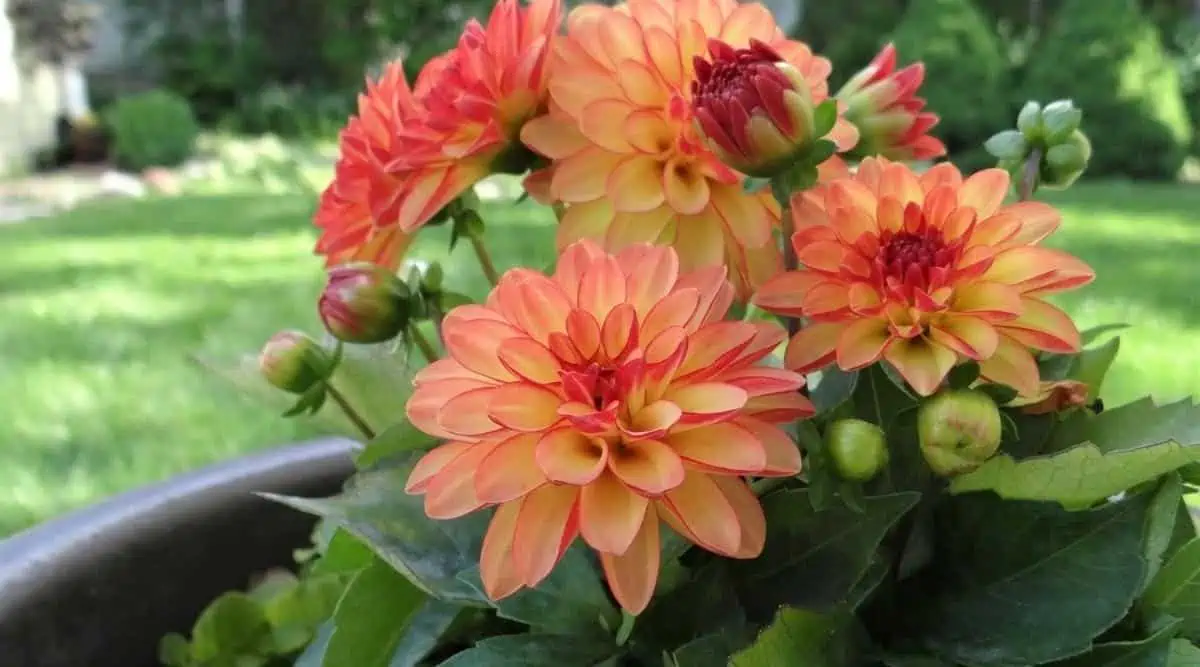
Image Source: Allaboutgardening.com
Waterlily dahlia flowers are characterised by full double blooms with petals that are curled spirally giving the flower a shallow appearance. These flowers have a beautiful soft appearance which makes them a great addition to an in-home plant display or garden. Its soft and delicate design along with the vibrancy of its colours makes it a very appealing home plant.
| Also see: How to grow 12+ Orchid types for exquisite home decor? (Buy now) |
Dinnerplate
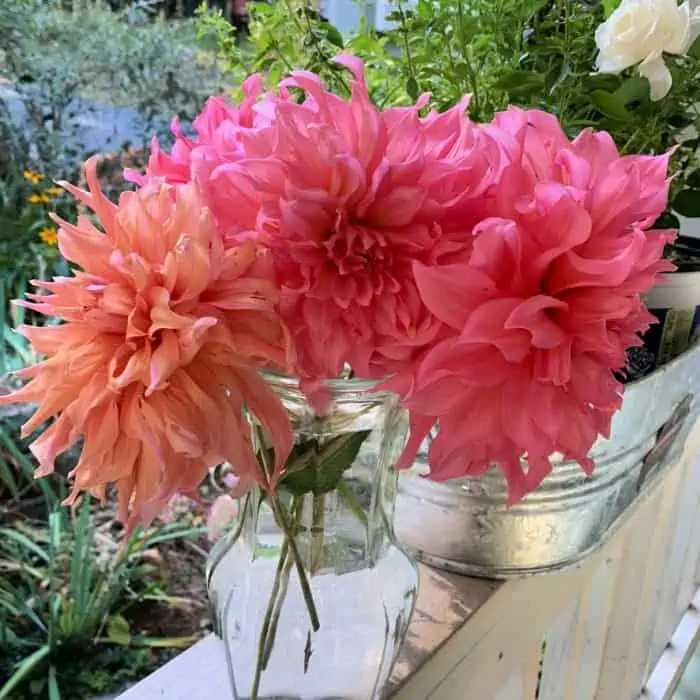
Image Source: Flowerpatchfarmhouse.com
This is a giant variety of Dahlias which produces big plate-sized flowers as can be seen from the image above. These flowers grow to around nine to eleven inches. You can plant these Dahlias in your home garden and they would grow strong stems up to four or more feet giving adequate support to the giant flowers it produces. These flowers bloom for weeks and enliven any space with their beautiful colours. Also, they are great as cut flowers and for making striking floral arrangements.
| Also see: Petunia: A handbook on planting, caring, varieties & decor ideas |
Single Dahlias
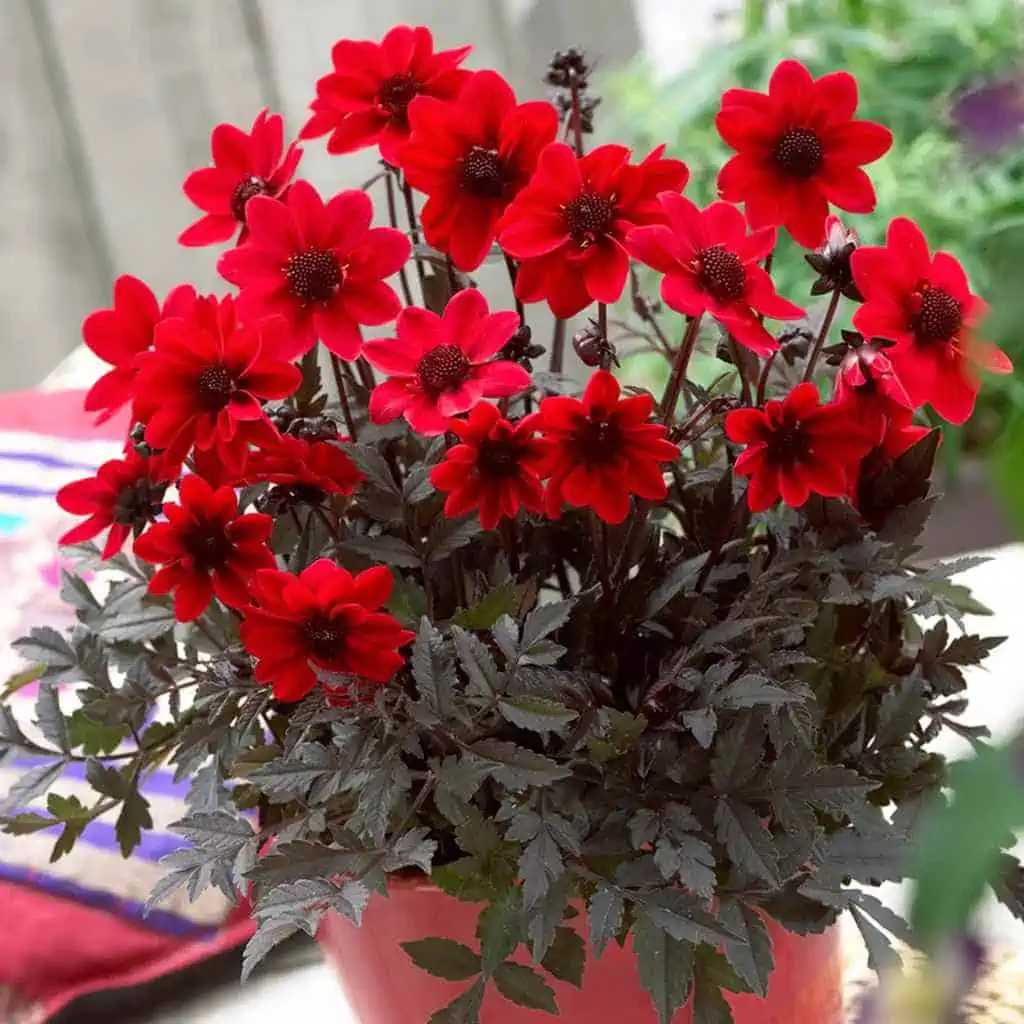
Image Source: Plantcetera.com
This variety of Dahlias produces flowers which have a single row of petals which uniformly overlap each other without leaving any gaps in between. Also, they generally have a diameter of 10 cm. These flowers can be an attractive option for nature lovers because of their soft delicate look and elegant appeal. They can also be used as cut flowers and put in a floral arrangement.
| Also see: How to plant, grow & decorate using Jasmine flowers (Shop here!) |
Collarette
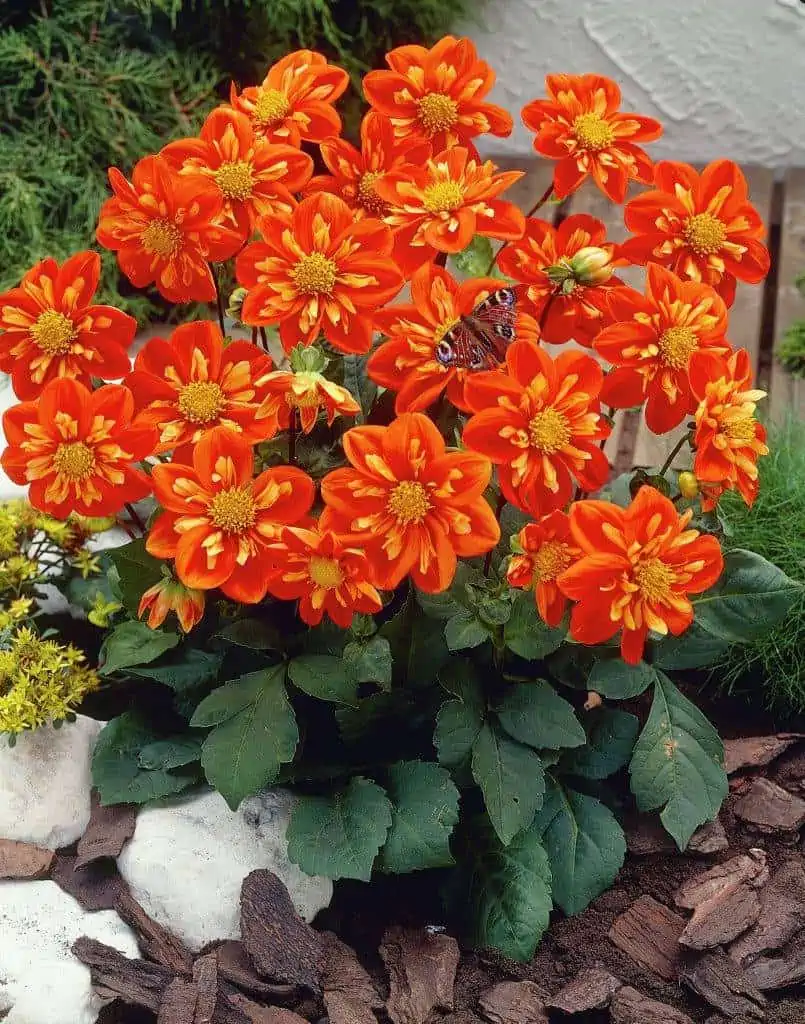
Image Source: Walmart.com
This variety of Dahlias has large flat petals which surround a ring of smaller petals as displayed in the image above. In the centre of the flower lies a collar which is generally of a different colour or hue. These beautiful flowers have an identifiable and distinct shape because of the collar. These flowers make for a great addition to an indoor display or a cosy balcony garden. It enlivens the decor and adds more interest because of its colour and shape.
How to grow Dahlias indoors?
Select a compatible variety
Dahlias are available in all shapes and sizes, from large flowers to tiny ones that resemble a pompom. Therefore, select the variety which is compatible with the space where you are planning to plant your Dahlias. So, when it comes to growing Dahlias indoors, it is advisable to go for medium or small varieties. Since small or medium varieties of Dahlias thrive better in a pot or container, they are ideal options for indoor planting.
Select the right pot
For planting Dahlias, a pot which has a diameter of eight to twelve inches is ideal depending upon the size of the tuberous root of Dahlias. Before selecting the pot, ensure that the pot matches the potential height of your plant. This will ensure that the plant doesn’t look out of proportion with the pot when it fully grows out. Furthermore, the pots should have proper drainage. Also, it is important to clean the pot thoroughly before potting new plants.
Potting process
After you have cleaned the pot, fill one-third of it with well-draining and moist potting soil. Now lay the tuberous root of the Dahlia horizontally on top of the potting soil. Ensure that the eye of the root is facing upward and is laid at the centre of the pot. After you plant the Dahlias tuberous root, cover it up with a light layer of potting soil and moisten the surface to make it damp. Ensure that you don’t fill the pot with soil. When the plant starts sprouting, add more soil around the Dahlia stalk to enable it to establish deeper roots. Once done, place the plant in a spot that receives a lot of sunlight or keep it under grow lights.
How to care for and propagate Dahlias?
Top tips for Dahlia care
Water
Dahlias, when fully grown, require moist soil. However, ensure that you do not overwater your Dahlia as that will cause its tuberous root to rot. When the plant is in its earlier stages, it shouldn’t be watered too often. During this stage, the soil can be completely dried out before the next watering session.
Sun
When you plant Dahlias, ensure that you look for a spot that receives a lot of sunlight. Dahlias require six to eight hours of sun. Proper sunlight will enable the plant to produce abundant flowers.
Fertilizers
During the growing stage, the Dahlias plant will get all its nutrition from the tuberous root. Therefore, fertilizing at this stage is of no use. When the plant grows out a few leaves, start fertilizing it once a month. It is important to choose the right fertilizer; if you choose one which is high in nitrogen, it would facilitate leaf production. On the other hand, if you choose a fertilizer high in phosphorous and potassium for your Dahlias, it will aid in flower production and stronger root growth.
Facilitate flower production
Pinching your Dahlias will facilitate a stronger and bushier plant that produces more blooms. When the plant starts showing four sets of leaves, find the highest sprout and remove it with scissors. Doing this will encourage more stem growth laterally.
Deadheading is the process of removing dead or withered flowers from the plant. This encourages growth because now your plant can focus on producing new flowers rather than saving old ones.
Propagating Dahlias
Seeds
When it comes to propagating Dahlias from seeds, it is interesting that it doesn’t always yield a parent twin. You can collect several seeds from the same plant and still end up with different colours and shapes. Seeds need warmth to germinate and the ideal temperature is around 20 degrees Celcius. Place the seeds in a damp folded cloth piece or even a paper towel. Now, keep the seeds in a sealed container that keeps the moisture intact. Then keep the container in a spot that maintains a temperature of at least 20 degrees Celcius. Regularly check for germinated seeds as Dahlia seeds typically show white roots after germination. The germinated seeds need filtered sunlight. After the seeds begin showing leaves, you can plant them to grow your Dahlias.
Cuttings
This method can yield five to ten Dahlias from a single tuberous root. For this method, use stems that are seven to eight cm long. Now, use a sharp knife to cut the stem away from the tuber; if the stem doesn’t have the same part as the tuber, just cut the stem under a leaf node. If there are leaves on the lower part of the stem, chop them off. Now, fill a container with compost and put a hole in it using a pencil. Then, place the stem in the hole gently and water the cuttings. To prevent the loss of moisture, place a clean plastic bag over the pot and hold it in place using rubber bands. These cuttings will take 2-3 weeks to grow roots which you can then use to grow your own Dahlias!
Get exquisite Dahlias here!
Nation Bloom Big Dahlia Pink Plant
| B U Y H E R E |
DHgate Multi-Colour Dahlia Seeds
| B U Y H E R E |
Ubuy Dahlia New Baby (Tubers) Orange
| B U Y H E R E |
Plantslive Dahlias (Rani) – Plant
| B U Y H E R E |
Ugaao Dahlias Seeds
| B U Y H E R E |
Nurserylive Dahlias (Any Colour) – Plant
| B U Y H E R E |
Holland Bulb Farms Pulp Fiction Dahlias
| B U Y H E R E |
Plantslive Dahlias Plant
| B U Y H E R E |
Root Bridges Dahlias Mix Seeds
| B U Y H E R E |
Lawness Belle Of Barmera Dahlias 60 Seeds
| B U Y H E R E |
Ultimate inspiration to enliven your home with Dahlias
Conclusion
Indoor plants are a great way to bring life into your home while elevating your room decor at the same time. Whether you wish to add a splash of colour indoors or fill up an empty wall with interest, an indoor plant display can help tremendously. When it comes to adding colour to any plant display, Dahlia is a great option to consider. Dahlias come in different types varying in shapes, sizes, and colours, making them an easy plant to work with and care for. When growing Dahlias indoors, ensure that you pick the right variety that is compatible to be grown in a container. Also, keep in mind, that the size of the container should be proportionate to the size of the flower. You can plant Dahlias by placing their tuberous root in potting soil.
When it comes to propagating Dahlias, you can use roots or seeds. Both these methods yield different results – for example when you use Dahlia seeds, you might end up with a plant different from its parent. After growing Dahlias whether from roots or seeds, you have to water them consistently, give them plenty of light, and feed them fertilizer once a month after it develops leaves. So, now that you know how to plant, propagate, and care for Dahlias, get inspired by our gallery of images for styling inspiration and feel free to use the links displayed above to buy your own today!
*The featured image used in this article is from Unsplash (Katie Burnett)
A Jasmine plant is a group of vines and shrubs that belong to the Oleaceae family, also known as the olive family. Its botaniHow to plant, grow & decorate using Jasmine flowers (Shop here!)









